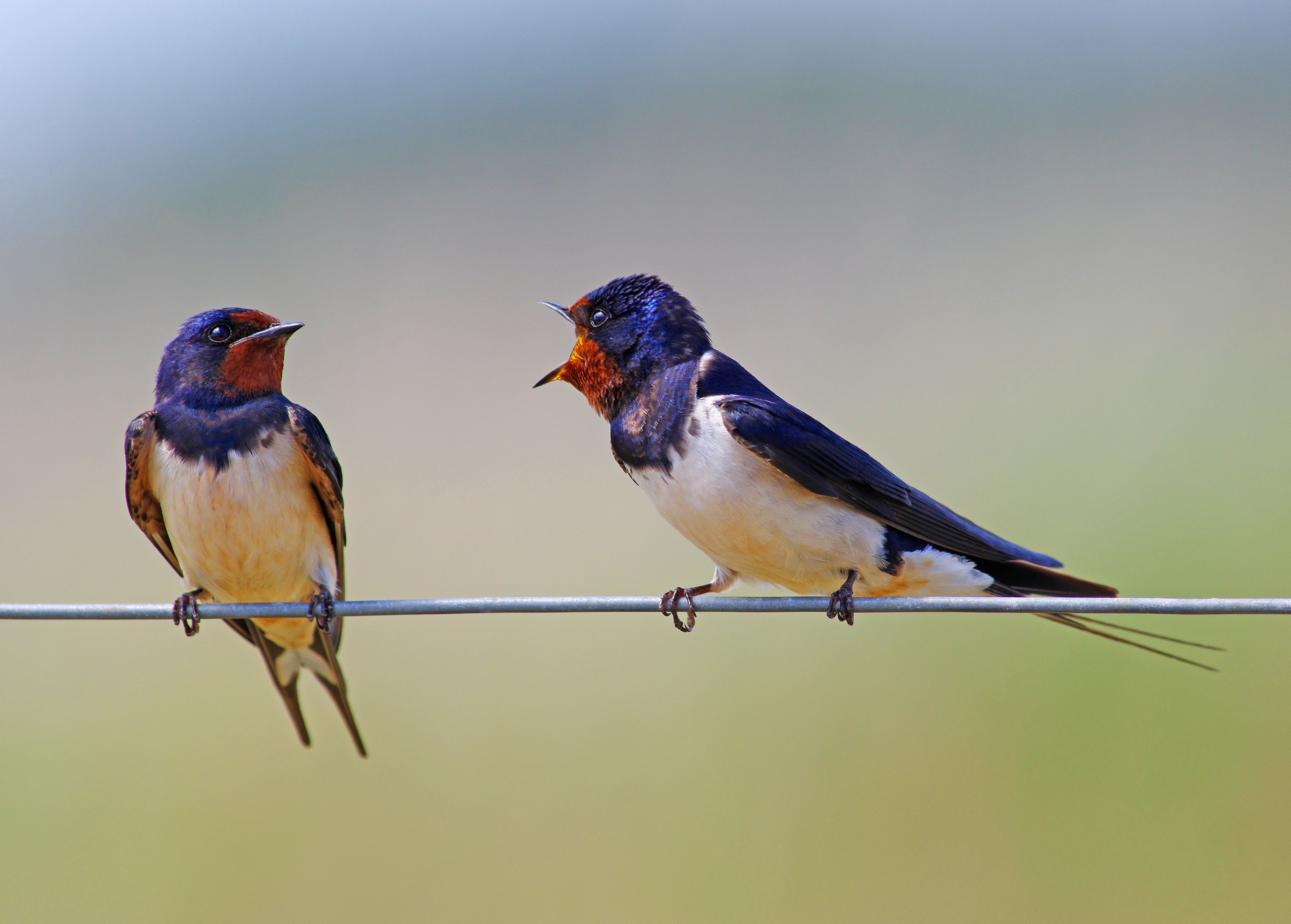
Female birds sing. That is one of the revelations of our 2020 study on one of the most abundant, widespread, well-studied bird species in the world: the barn swallow. Despite the well over 1,000 scientific publications about this species, female barn swallow song had never previously been the focus of a research article. Why does it matter that female song has been ignored in this bird that breeds across most of the Northern Hemisphere? It highlights a long-standing bias and helps us think about why that bias persists.
Since the beginning of modern birdsong research, the field has focused on male songbirds. Any ornithologist or serious birder working in the tropics could tell you that females do sing, sometimes as frequently as males. However, early birdsong researchers tended to be men and to study species near their universities in the Northern Hemisphere. Men are significantly less likely than women to lead research projects studying female song, and temperate-zone birds show different female song behaviors than tropical birds. Thus, we are missing key behaviors as a result of historical and geographical biases stemming from a lack of diverse participation in science.
So how do we make science welcoming and accessible for all? We need to communicate better with nonscientists, and we need to encourage kids to see themselves as future scientists. Engaging the public in science is not only essential for topics like climate change and vaccine safety that have obvious applications to public well-being, but also for basic science findings that influence how we perceive the world around us.
For example, if we can get everyone to understand that female birds do sing—that these vocalizations have evolved to serve important functions in communication, just like the sounds produced by males—we will change a narrative that has existed for decades. This matters to scientists, but it also matters to the billions of people who hear the sounds of wild birds every day. We believe it meaningfully changes a person’s experience to recognize that those sounds might be coming from male and female birds. In many species, including barn swallows, males and females look similar from a distance, but can be distinguished by ear. (You can see and hear male and female barn swallows singing in this video.) Paying close attention to which sounds each sex makes and thinking about why they might be producing them opens up a richer window into the environment around us. It turns out female birds use songs for all the same reasons male birds do: to signal individual identity, defend valuable territories and attract potential mates. There are also differences in song behavior between the sexes. Female barn swallows primarily sing just before they begin breeding, and knowing that can help observers track the timing of barn swallow nesting.
Public awareness of female birdsong has the potential to change the science itself. Science initiatives like eBird and xeno-canto collect millions of public observations and audio recordings of birds every year. People who understand the latest science will create better global data sets and these, in turn, will feed back into better science. Increasing public engagement and involvement with research promises to benefit the scientific community and society more broadly. In many scenarios, scientists and experts already have strongly held biases about the way the world works, and these biases allow mistaken conclusions to persist. Public observers often make better observers of the world around them because they lack preconceived notions. One of us (Lauryn Benedict) often talks to public groups and finds that birders (“experts”) and nonbirders have very different reactions to the fact that 64 percent of songbird species have female song: birders are consistently shocked that the number is so high, while nonbirders ask: “Why isn’t it 100 percent?”
Lessons about current, authentic science are ideal for engaging students who have yet to absorb existing biases. Accordingly, one of us (Matt Wilkins) adapted our female songbird research into a free, interdisciplinary lesson for grades 5–12. We have found that students are eager to be involved in new discoveries and the process of science. Matt once told a fifth-grade math class that they were among the first people in the world to explore a data set from a study on how bird vocal pitch increases with body size (before it was published), and they spontaneously broke into applause.
Female birds sing! Our need to declare that fact so emphatically matters because it reflects historical biases and the constant adjustments of the scientific consensus as new facts are available and new voices are added to the conversation. We welcome a future where research, communication and education combine to improve our understanding of the world around us and deepen our connections to each other and the natural world.



